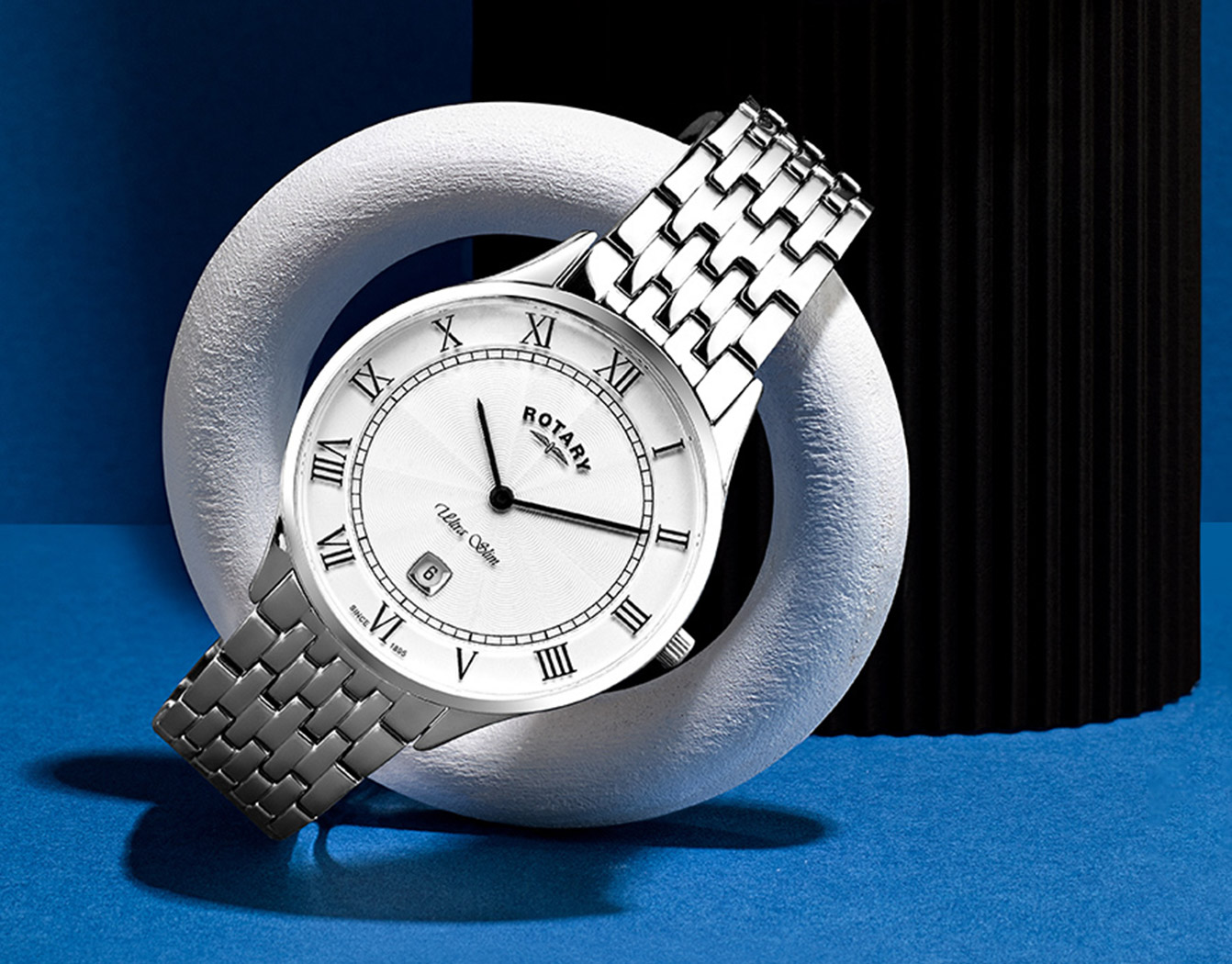HOW TO BUY A WATCH LIKE A PRO
We all know looks aren't everything, so if you are going to buy a watch you will need to understand watch movements. Here's the lowdown to get you clued up fast.
Ever wondered what makes a watch tick? You may not know it, but the world of watch making is packed full of microscopic engineering and the kind of talented artisans who make the rest of us feel a little bit envious.
Watches can contain one of two kinds of movement: quartz or mechanical. Both are interesting, so all you need to do is choose the watch that’s right for you.
To make sure you're getting what you really want, here's how to buy a watch and ask the right questions about what’s hidden behind the dial...
WHAT IS A QUARTZ WATCH MOVEMENT?
The quartz watch was first introduced in the 1960s and it has been popular ever since. This kind of watch is powered by a battery that includes a small piece of quartz mineral. The battery sends a tiny electrical current through the quartz, which causes it to vibrate. These vibrations or oscillations make the second hand of a watch move at the ideal rate of once per second, which means it can keep time.
Here’s a little trick... if you want to quickly spot a quartz movement, just look at the way the second hand moves. If it jumps every second with a classic 'tick, tick, tick' sound, then it is probably quartz.
Batteries tend to last around two to five years in a quartz watch, and they are known for being reliable and low maintenance. Some are so accurate they only 'lose time' by one or two seconds each year.
WHAT IS A MECHANICAL WATCH MOVEMENT?
This is where things get a little more complicated. A mechanical watch is not powered by a battery. Instead, a mechanical watch movement uses energy from a tightly wound spring inside a miniscule mechanism, known as a calibre. This energy is stored and transferred through a complex system of gears and cogs that keeps a watch ticking.
This traditional method of watchmaking requires epic levels of skill. Most Swiss made mechanical watches must be entirely hand-assembled, which makes them time-consuming little machines.
There are two main types of mechanical watch: self-winding (automatic) or hand-wound.
WHAT IS A SELF-WINDING OR AUTOMATIC WATCH?
A mechanical watch needs energy, but where does this come from? In a self-winding watch (more commonly known as an automatic movement), this energy is created by a rotor that winds the spring every time you move your wrist.
If a watch with an automatic movement is worn all day long, it will never run out of power. The majority of mechanical watches available today are automatic.
WHAT IS A POWER RESERVE?
If you don't wear your automatic watch it will eventually stop ticking, because it is not being 'powered' by the movement of your wrist. This doesn't mean it’s stopped working though!
Many automatic watches have a special feature known as a watch power reserve. This means that for a certain amount of time once you've stopped wearing your watch, it will continue to keep time. Once this runs out, you will need to reset the time on your watch and simply start wearing it again. Simple.
WHAT IS A HAND WOUND MECHANICAL WATCH MOVEMENT?
This type of watch is a less common, but lots of people love a hand-wound watch movement because it puts the wearer back in the driving seat. Rather than relying on the movement of your wrist, a hand-wound watch must be kicked into action by winding-up a coiled spring to store energy. This may need to be done every day.
As the spring unwinds, a set of gears drive the hands around the dial and a balance wheel makes sure they stay on time.
Mechanical watches, including automatic watch calibres and hand-wound watch movements, have a characteristic sweeping second hand. Instead of ticking like a quartz movement, they sweep around the dial.
If you've owned a mechanical watch for a long time, it may need servicing or cleaning to ensure it continues to work well.
UNDERSTANDING MECHANICAL WATCH COMPLICATIONS
You may have heard the word 'complication' used in watch conversations, but it isn't a bad thing in this case! Mechanical watches normally offer an hour hand, minute hand and seconds hand, with the addition of a date window and sometimes a day window. Others may be a chronograph watch, which means they have an in-built stopwatch.
Features that go over and above telling the time are referred to as 'complications'. Basically, anything that makes the internal calibre more complicated to produce. Examples are alarms, moonphase watches, minute repeaters, perpetual calendars and tourbillons. These fantastic additions to a mechanical watch movement are a sight to behold, but they are also expensive to produce. A mechanical watch with lots of complications is likely to be more expensive.
WHAT IS A CITIZEN ECO-DRIVE WATCH?
Some brands have developed their own unique watch movements that are neither quartz nor mechanical. A good example is Citizen with its Eco-Drive watch.
Designed in the 1970s, this watch movement is powered by light. It is essentially a solar powered watch that never ever needs a battery. So, how does it work? Natural or artificial light shines through a translucent dial onto a solar cell, which converts light into energy. This energy then powers the watch.
SPECIAL FEATURES
When buying a watch it is also important to consider its construction and quality. For example, an ETA Swiss quartz movement or Swiss made mechanical watch benefits from generations of Swiss watchmaking tradition, while Japanese quartz movements are also highly prized. If you are purchasing a stainless steel watch it is worth asking what grade of stainless steel has been used, as poor qualities can oxidise and rust over time. There are a whole host of extra perks to be aware of, like scratch-resistant sapphire crystal, screwed-down crowns for diving watches, and exhibition case backs to allow you to see the movement within. Make sure you are armed with questions and don't buy until they are answered.
Choose a new watch based on the good vibes it gives you but spare a thought for the movement inside. Buy a quartz watch if you want a low maintenance, innovative and accurate movement that rarely requires a battery change. Or buy a mechanical watch to wear a little bit of human engineering on your wrist.
Both are just as fabulous; you just have to find the one that expresses your personality best.
IF YOU LIKE THIS...YOU'LL LOVE THESE

Summer Style with Sesky!
The new Seksy collection has launched for Summer, with fresh new styles to choose from - Seksy has you covered for summer fashion.

Everything About How Watches Work
The movement refers to the mechanism that drives the hands on a watch face, but how does your watch actually work?

Wear Your Super Power On Your Wrist
Powered by Any Light. Learn about Citizen's Marvel collection.


 They will be on video but won't see you.
They will be on video but won't see you. Make sure to enable your mic if prompted.
Make sure to enable your mic if prompted. Language:
Language:


